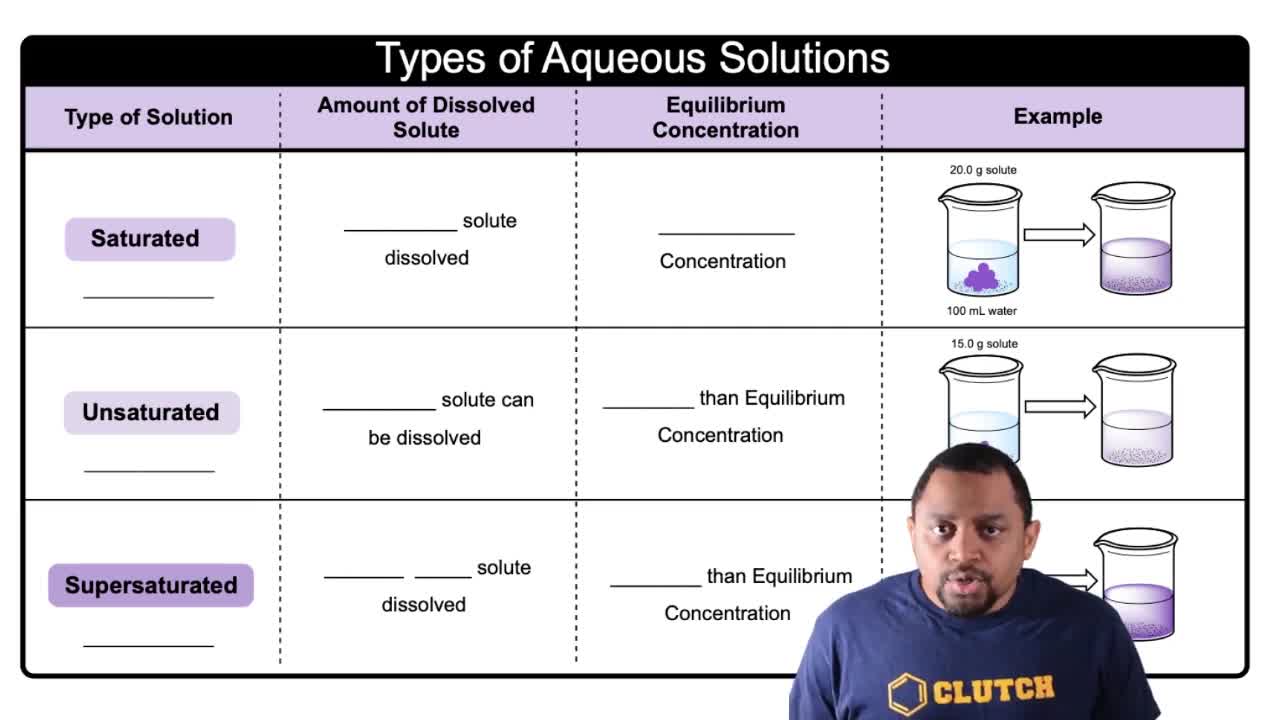Here are the essential concepts you must grasp in order to answer the question correctly.
Saturation and Solubility Product (Ksp)
Saturation refers to the point at which a solution can no longer dissolve additional solute at a given temperature. The solubility product constant (Ksp) is an equilibrium constant that quantifies the solubility of a sparingly soluble ionic compound. For calcium phosphate, Ca3(PO4)2, Ksp is determined by the concentrations of its ions in a saturated solution, specifically [Ca2+] and [PO43-].
Recommended video:
Solubility Product Constant
Stoichiometry of Dissociation
The stoichiometry of dissociation describes how a compound breaks down into its constituent ions in solution. For Ca3(PO4)2, the dissociation can be represented as Ca3(PO4)2 ⇌ 3Ca2+ + 2PO43-. This means that for every mole of Ca3(PO4)2 that dissolves, three moles of Ca2+ and two moles of PO43- are produced, establishing a relationship between their concentrations in a saturated solution.
Recommended video:
Concentration Relationships in Saturated Solutions
In a saturated solution, the concentrations of the ions are related through the Ksp expression. For Ca3(PO4)2, Ksp = [Ca2+]^3[PO43-]^2. When the concentration of one ion changes, the concentration of the other must adjust to maintain the equilibrium defined by Ksp. This relationship allows us to calculate the concentration of PO43- when [Ca2+] is known.
Recommended video:
Different Types of Aqueous Solutions




